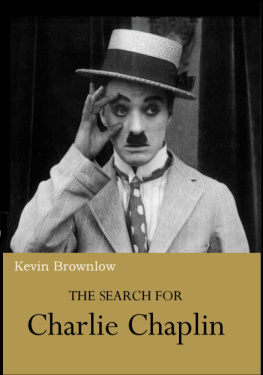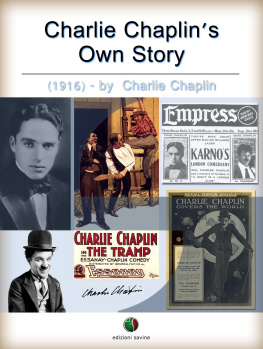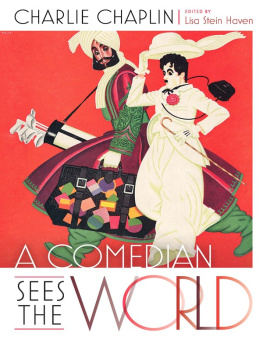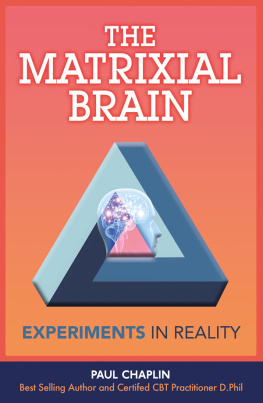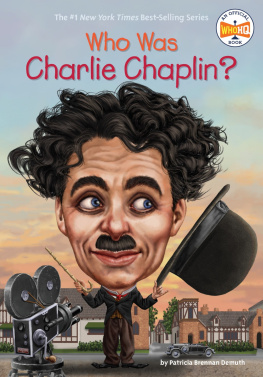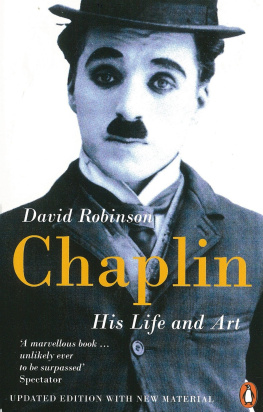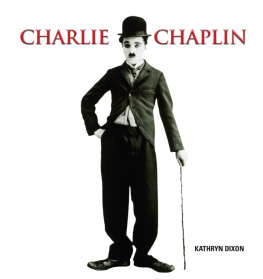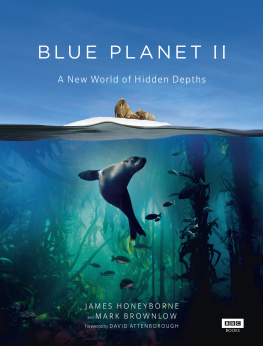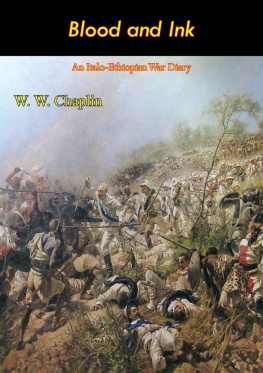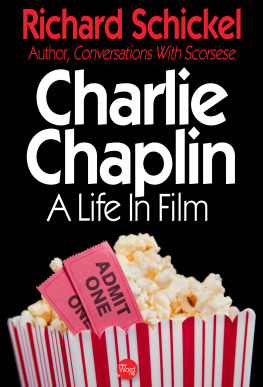Brownlow - The Search For Chalie Chaplin
Here you can read online Brownlow - The Search For Chalie Chaplin full text of the book (entire story) in english for free. Download pdf and epub, get meaning, cover and reviews about this ebook. year: 2017, publisher: UKAPress, genre: Non-fiction. Description of the work, (preface) as well as reviews are available. Best literature library LitArk.com created for fans of good reading and offers a wide selection of genres:
Romance novel
Science fiction
Adventure
Detective
Science
History
Home and family
Prose
Art
Politics
Computer
Non-fiction
Religion
Business
Children
Humor
Choose a favorite category and find really read worthwhile books. Enjoy immersion in the world of imagination, feel the emotions of the characters or learn something new for yourself, make an fascinating discovery.
- Book:The Search For Chalie Chaplin
- Author:
- Publisher:UKAPress
- Genre:
- Year:2017
- Rating:4 / 5
- Favourites:Add to favourites
- Your mark:
- 80
- 1
- 2
- 3
- 4
- 5
The Search For Chalie Chaplin: summary, description and annotation
We offer to read an annotation, description, summary or preface (depends on what the author of the book "The Search For Chalie Chaplin" wrote himself). If you haven't found the necessary information about the book — write in the comments, we will try to find it.
The Search For Chalie Chaplin — read online for free the complete book (whole text) full work
Below is the text of the book, divided by pages. System saving the place of the last page read, allows you to conveniently read the book "The Search For Chalie Chaplin" online for free, without having to search again every time where you left off. Put a bookmark, and you can go to the page where you finished reading at any time.
Font size:
Interval:
Bookmark:
Published by UKA Press
Copyright Kevin Brownlow 2005, 2010
Kevin Brownlow has asserted his right under the Copyright, Designs and Patents Act1988 to be identified as the author of this work. This book is sold subject to the condition that it shall not, by way of trade or otherwise, be lent, resold, hired out orotherwise circulated without the publishers prior consent in any form of binding orcover other than that in which it is published and without a similar condition including this condition being imposed on the subsequent purchaser.
First published in Italian and English by Le Mani - Microart
(Cineteca Bologna)
2005
This edition published by
UKA PRESS PUBLISHING
London & Yorkshire, UK
Olympiaweg 102-hs, 1076 XG, Amsterdam, The NetherlandsSt. A, 108, Shida, Fujieda, Shizuoka 426-0071, Japan
ISBN : 978-1-906796-24-3(1-906796-24-6)
Stills in this volume copyright Roy Export Company Establishment, Douris Corporation and Photoplay Productions
This book was prepared for print by UKA Pressand printed in Great Britain
To David Gill, to whose talent and tenacity weowe these documentaries
and
to David Robinson, on whose knowledge and helpfulness we were so dependent

3. The Next Battle ............................................... 26
17. If Walls Could Speak ................................. 165
Acknowledgements ............................................. 217
In February 1983, shortly after Unknown Chaplin had been shown on television, a Spanish journalist telephoned David Gill and told him he wanted to write about the series.
I hated Chaplin, he said, with unexpected vehemence, until I saw your programme. I thought him so Victorian. And ugly. When I saw your prints so sharp and clear it was an entirely different experience. Now I change my mind. I think I do article on the Charlie Chaplin revival.
In the world of film collecting, the claim find of the century may sound an unpardonable exaggeration. But what discovery can equal it?1Collectors had hailed the discovery of the occasional lost Keystone comedy in which Chaplin played, but nobody had the slightest idea that somewhere in England, somewhere in France, and somewhere in the United States lay three separate treasure troves of silent film which would, for the first time, reveal the working methods of the greatest single figure of the cinema. It was a treasure hunt involving innocence and guile, accident and coincidence. A treasure hunt which took us to Switzerland, France and the United States. The treasure, when it was uncovered, revealed information as precious as the film itself. From the material, we compiled a television series called Unknown Chaplin, three hour-long documentaries produced for Thames Television.
Apart from the experience of making the series, we learned so much about Chaplin we could not squeeze into the commentary we decided to preserve it in the form of a book.
When we began research, the first thing that struck us was the paucity of knowledge about Chaplin as a filmmaker. His private life hadbeen splashed across the newspapers of the world, and the vicious melange given the dignity of hard covers. With so much gossip to occupy their attention, journalists could hardly be expected to care how the man made his films, even if those films were the most successful ever made. Yet one expects more from serious historians.
Something like three hundred books have been published about Chaplin. So many follow the same line a recounting of the life, followed by the stories of the films you begin to suspect that the authors have read five and written a sixth. Virtually none of them took the trouble to interview Chaplins associates.
Albert Austin (d.1953), Henry Bergman (d.1946) and Edna Purviance (d.1958) were overlooked, despite the wealth of information they would have been able to provide. And Sydney Chaplin (d.1965), Charlies half-brother, would have known more than any of them, yet only one author, R.J. Minney, bothered to capture any of his memories. I write harshly on the subject, yet I am to blame myself. When I beganresearching the silent cinema, Sydney as well as Charlie, was still alive. Yet Chaplin was low on my scale of priorities. I was convinced thateverything that could be said about him had already been said repeatedly. By the time I realised how wrong I was, it was too late.
1. I have used it about the miraculous discovery by Wales Film Archive of the 1918epic on David Lloyd George, which certainly deserved it, despite being ignoredshamefully by the press and even by Welsh Channel 4.
Fortunately, David Robinson published his masterly biography in 1985 too late for our programme, but not too late for him to play a vital part in getting it to happen.
In our researches, we found that Chaplins assistant on The Circusand City Lights, Harry Crocker, had written his memoirs. (The unpublished manuscript is preserved at the Academy library.) And Eddie Sutherland, assistant on A Woman of Paris and The Gold Rush, hadrecorded his. (The tape and transcript is at the Oral History Departmentof Columbia University.) Even more important, someone had persuaded Chaplin to sit down and talk into a tape recorder and that story is worth relating in the detail it deserves. While some of the information we found is supported by documents, and can thus be proved, a great deal of it comes under the heading of educated guesswork. We workedvery much like archaeologists, studying the evidence of our eyes. To be strictly accurate, I should use the phrase might have a great deal, for my comments on the Mutuals, for instance, are surmisals only. But theyare surmisals based on such strong evidence that it would be irritating to be so half-hearted. I want to make this clear at the start, for the benefit of future historians of Chaplins work.
Throughout the book, I use the name Chaplin for the man, and Charlie for the character.
In England, where Chaplin was born and where he enjoyed the fan worship usually reserved for royalty, public opinion has undergone a radical change. As though embarrassed by the adulation of their elders, new generations have poured cold water over Chaplins reputation. Opinions, however, are not facts. The fact that neither Buster Keaton or Harold Lloyd, the two other great silent comedians, could have come to prominence without their way being paved by Chaplins huge commercial success is beside the point. The fact that Chaplins early, and admittedly crude, comedies of 1914-15 are compared to Keatons of the sophisticated 1920s is also irrelevant. The important fact is that Chaplinwas, in his time, the phenomenon of the age. No one was so famous, no one better loved. It is impossible for anyone who has not experienced itto understand it. A letter we received from a viewer, Douglas Johnson of Ilford, Essex, conveys a hint of it: Whenever a Chaplin film was showing the whole audience was intent on laughing and enjoying every gesture. The feeling throughout the cinema would be electrifying. It was wonderful to be participating in the warmth being shown to Charlie and his supporting players. During my school years, you were either a Chaplin fan or a Harold Lloyd fan, almost dividing the class into two. My father would tell me Given an empty room as a set, Charlie could by himself make you laugh, whereas Harold would have great difficulty without his props. And that remained my argument for many years.
The fact that Chaplins great films are so seldom shown, either in the cinema or on television, is a crippling drawback. Yet, paradoxically, Chaplin is an over-exposed comedian. His earliest, and least impressivework, being long out of copyright, is churned out on television in wretched prints with miserable musical accompaniment. As another correspondent, stage producer Peter Cotes, put it, referring to the series: It was a bonus to have the unadulterated Charlie on the screen, and not in the form that hes been so often; badly re-edited and quite atrociously accompanied by that orchestra so insensitively recorded in the Netherlands sound studio by a barmy band! Television, of course, is not the medium for which Chaplins films were designed. Chaplin composed his scenes in loose mid-shots, ideal for the big screen, but not close enough for television. He was also confident of large audiences, united by laughter. A large audience in front of a TV set is five people. The electricity generated in the cinema does not exist. Comedies and not just Chaplins comedies are often watched straight-faced, in stony silence. Laughter is supposed to be infectious; the atmosphere at homeis often sterile. This is one reason why TV comedians are supported by canned laughter.
Font size:
Interval:
Bookmark:
Similar books «The Search For Chalie Chaplin»
Look at similar books to The Search For Chalie Chaplin. We have selected literature similar in name and meaning in the hope of providing readers with more options to find new, interesting, not yet read works.
Discussion, reviews of the book The Search For Chalie Chaplin and just readers' own opinions. Leave your comments, write what you think about the work, its meaning or the main characters. Specify what exactly you liked and what you didn't like, and why you think so.

